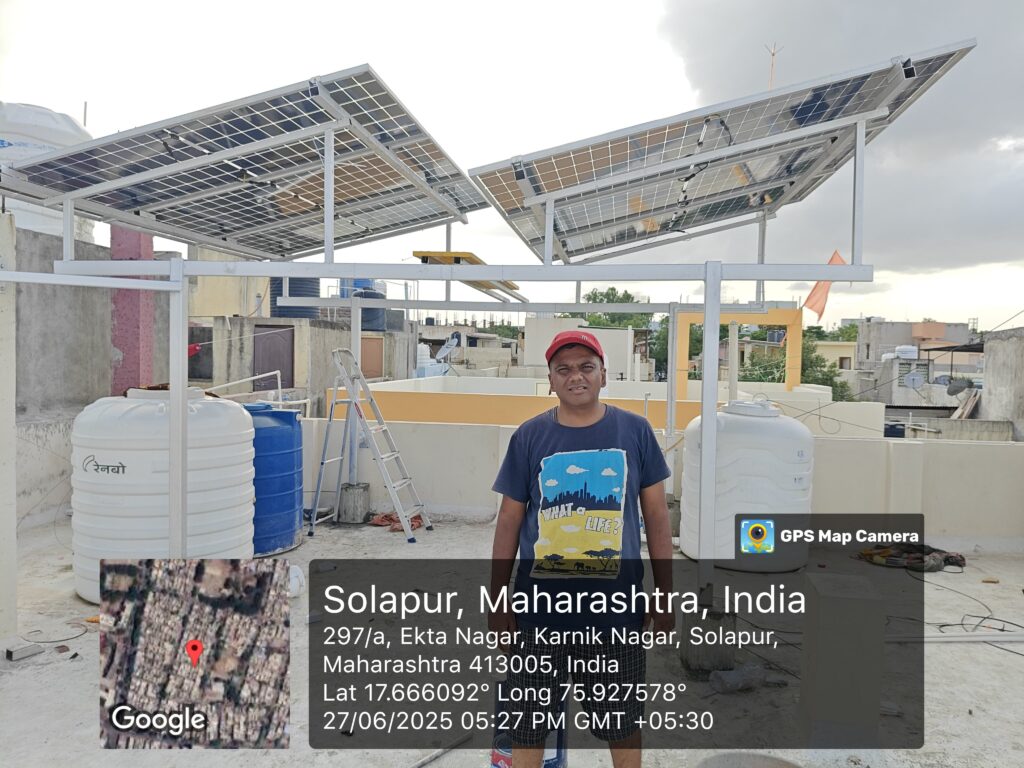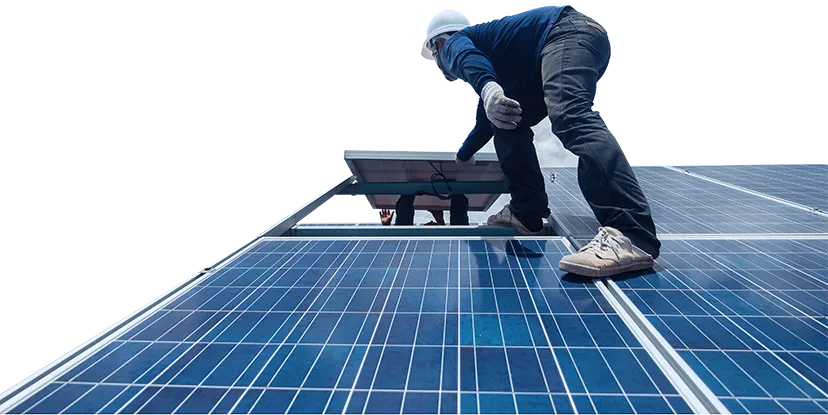Solar Energy for Home: A Complete Guide to Smarter Living

Introduction: A Brighter Way to Power Your Home
In a world that’s steadily shifting toward cleaner and more sustainable energy, solar power has become the cornerstone of modern home energy solutions. Rising electricity costs, unreliable grid supply, and growing environmental awareness are pushing homeowners to explore solar energy for home as a smart and long-term investment.
From small villages to growing cities, Indian homes are now powered by the sun — clean, renewable, and cost-efficient. Solar energy not only helps families achieve energy independence but also plays a crucial role in reducing carbon emissions.
Behind this transformation are innovative companies and local solar experts who ensure quality installation, after-sales service, and customized system design. Homeowners in Western Maharashtra, for example, are increasingly choosing trusted solar partners like Yatee Powertech, who make solar adoption simple, safe, and affordable.
Understanding Solar Energy for Home
Solar energy for home means harnessing sunlight and converting it into electricity using solar photovoltaic (PV) panels. These panels are usually installed on the rooftop, where they receive direct sunlight throughout the day. The energy generated can be used to power lights, fans, appliances, and even water heaters.
Solar energy systems for homes can be designed in different capacities depending on the household’s energy needs. A small family might need a small solar system for a house (1 kW to 3 kW), while larger homes may opt for systems ranging from 5 kW to 10 kW.
The biggest advantage? Solar power is renewable, maintenance-friendly, and can drastically cut down your monthly electricity bills.
Benefits of Solar Energy for Homes
Investing in solar energy for home offers both financial and environmental rewards. Here are the major benefits every homeowner should know:
1. Reduced Electricity Bills
One of the most immediate advantages of solar power is cost savings. By producing your own electricity, you can significantly reduce — or even eliminate — your dependency on the grid. For homes in areas with high daytime power consumption, rooftop solar systems offer remarkable long-term savings.
2. Energy Independence
Solar power provides freedom from frequent power cuts and fluctuating tariffs. With your own rooftop solar system, your home continues to run smoothly, even during outages.
3. Environmentally Responsible
Unlike fossil fuels, solar energy does not produce harmful emissions. Every kilowatt of solar energy generated reduces your carbon footprint and contributes to a cleaner planet.
4. Increased Property Value
Homes equipped with solar systems are considered more valuable and future-ready. Potential buyers are willing to pay more for properties that come with a reliable solar installation.
5. Government Subsidies and Tax Benefits
The Indian government, through its rooftop solar program, offers attractive subsidies for residential solar systems. This makes installation more affordable and ensures quicker payback on your investment.
What is a Rooftop Solar System for a House?
A rooftop solar for house setup involves installing solar panels on the roof of your home. These panels capture sunlight and convert it into direct current (DC), which is then converted into alternating current (AC) through an inverter — the form of electricity used by most household appliances.
Rooftop systems are typically of two types:
- Grid-Tied System: Connected to the electricity grid; excess power is exported, and you get credits through net metering.
- Off-Grid System: Independent of the grid, using batteries for power storage. Ideal for areas with frequent outages.
The right configuration depends on your location, roof type, and electricity consumption pattern. Reputed solar installers like Yatee Powertech help homeowners choose the most suitable system through a free site evaluation and energy audit.
Components of a Home Solar Energy System
To understand how solar energy works at home, it’s important to know the main components:
1. Solar Panels
The most visible part of the system, solar panels absorb sunlight and convert it into electricity. When choosing the best solar panels for home use, consider factors like efficiency, warranty, and durability. Tier-1 brands and advanced monocrystalline panels offer the highest performance.
2. Solar Inverter
A home solar inverter converts DC power from the panels into usable AC power. A good inverter ensures maximum power conversion and system stability. Modern inverters also come with mobile apps that track energy generation in real time.
3. Mounting Structure
This supports the panels on your rooftop. The design and angle of the mount determine how efficiently panels capture sunlight throughout the year.
4. Battery Bank (Optional)
In off-grid systems, batteries store extra power generated during the day for use at night or during cloudy days.
5. Solar Water Heater
A solar water heater uses sunlight to heat water for domestic use. It’s one of the simplest and most cost-effective solar technologies for homes.
How a Home Solar System Works.
- Sunlight Hits Panels: Solar panels absorb photons from sunlight.
- Power Conversion: The solar inverter converts DC to AC power.
- Electricity Usage: Power is distributed to your home’s appliances.
- Excess Power Export: In grid-tied systems, extra power goes back to the grid through net metering.
This process happens seamlessly and automatically, ensuring constant, eco-friendly energy flow.
Choosing the Best Solar Panels for Home Use
Selecting the best solar panels for home use depends on your energy needs, available space, and budget. Look for panels that offer:
A. High efficiency (above 20%)
B. Long warranty (25 years for performance)
C.Durable, weather-resistant build
D. BIS and MNRE certification
Indian homeowners increasingly prefer monocrystalline panels for higher efficiency and aesthetic appeal. Reliable brands like Mahindra Solarize Pvt. Ltd. provide panels and components that meet these quality standards and are compatible with most rooftop installations.
Professional installers such as Yatee Powertech integrate these high-quality panels with precise system design, ensuring long-term performance.
Small Solar Systems for Homes.
Not every home needs a large setup. A small solar system for house, ranging from 1 kW to 3 kW, can efficiently power basic household appliances such as lights, fans, TVs, and refrigerators.
These systems are ideal for families who want to reduce grid dependency without a heavy initial investment. Even small solar setups can generate meaningful savings and act as a reliable backup during power cuts.
Solar Water Heaters: Simple, Smart, and Sustainable
A solar water heater is one of the simplest ways to start your solar journey. Using solar collectors, these systems heat water directly through sunlight — no electricity or gas needed.
Modern solar water heaters come with insulated tanks that keep water hot for up to 24 hours. They’re especially beneficial for regions with ample sunshine, offering year-round hot water and minimal maintenance costs.
Home Solar Inverters: The Heart of Every System
Your home solar inverter plays a crucial role in making solar energy usable. It converts the DC power generated by panels into AC electricity, synchronizing it with the grid when necessary.
There are three main types of inverters used in home solar systems:
String Inverters – Suitable for medium-sized systems.
Microinverters – Installed directly on each panel for maximum efficiency.
Hybrid Inverters – Work with both grid and batteries, ideal for homes facing frequent power interruptions.
A well-designed inverter setup ensures maximum power generation and system reliability over time.
How to Plan Your Home Solar Installation
Switching to solar is easier than ever, thanks to government support and professional service providers. Here’s a simple step-by-step overview:
Energy Audit: Analyze your monthly electricity consumption.
Site Inspection: Evaluate your rooftop space and sunlight availability.
System Design: Determine system size and configuration.
Quotation and Approval: Get detailed cost and subsidy information.
Installation & Commissioning: Panels, inverter, and wiring setup.
Maintenance: Occasional cleaning and performance monitoring.
Partnering with an experienced installer ensures your system complies with safety standards and local DISCOM net-metering regulations.
Government Subsidies and Incentives for Homeowners
The Indian government promotes residential solar adoption through the PM Surya Ghar Muft Bijli Yojana and state-level programs. Homeowners can receive subsidies up to ₹78,000 (depending on capacity and state guidelines).
Subsidy eligibility generally requires:
Installation through an MNRE-registered vendor.
Use of BIS-approved components.
Completion of DISCOM net-metering formalities.
Companies like Yatee Powertech guide homeowners through every step — from documentation to subsidy claim — ensuring a seamless experience.
Solar Energy in Western Maharashtra: A Silent Revolution
Regions in Western Maharashtra, including Solapur, Kolhapur, and Satara, receive abundant sunlight throughout the year, making them ideal for residential solar adoption.
Homeowners here are rapidly shifting to rooftop solar for house setups as they realize the financial and environmental advantages. Local service providers have made solar more accessible with easy EMI options, post-installation maintenance, and transparent support.
The growing collaboration between trusted local partners like Yatee Powertech and reliable solar technology providers like Mahindra Solarize Pvt. Ltd. is powering thousands of homes with clean, renewable energy — silently transforming the region’s energy landscape.
Maintenance and Longevity of Solar Systems
Solar systems are remarkably low-maintenance. Regular cleaning of panels, periodic inverter checks, and professional inspection once or twice a year are sufficient. Most modern systems have online monitoring, allowing homeowners to track performance via smartphone apps.
With proper maintenance, a residential solar setup can efficiently run for 25+ years, offering long-term savings and consistent energy output.
The Future of Solar Energy for Homes
The next decade will witness a massive shift in how Indian households consume energy. With the push toward net-zero goals, smart grids, and improved battery technologies, solar homes will become the norm rather than the exception.
Technological advancements are making solar panels more efficient, inverters smarter, and batteries longer-lasting. Homeowners who invest today are positioning themselves for both economic and environmental gain.
Conclusion: Powering a Sustainable Tomorrow
Adopting solar energy for home is not just an environmental choice — it’s a lifestyle transformation. From powering daily appliances to heating water and running entire homes, solar energy brings independence, peace of mind, and savings that last decades.
Whether you start with a small solar system for a house or go for a complete rooftop solar setup, every step toward solar contributes to a cleaner, brighter future.
With trusted professionals like Yatee Powertech, your journey to sustainable energy becomes simple, reliable, and rewarding. The sun has always been free — it’s time to make it work for you.



